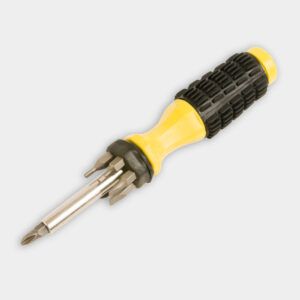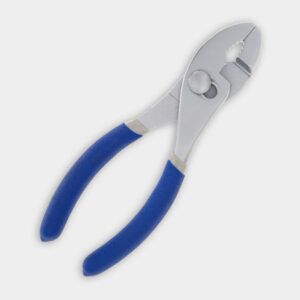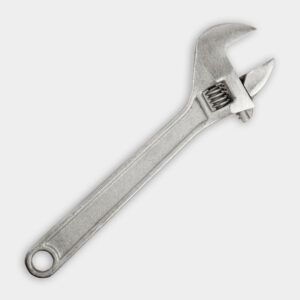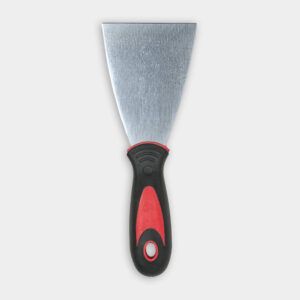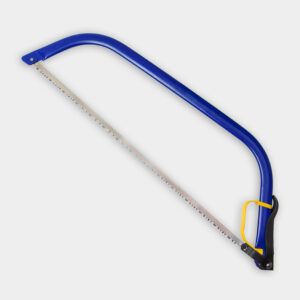We may be compensated if you purchase through links on our website. Our team is committed to delivering honest, objective, and independent reviews on home products and services.
Replacing a toilet seat is a simple homeowner task that should only take about 15 minutes of your time. In the video above, This Old House plumbing and heating expert Richard Trethewey shows host Kevin O’Connor how simple toilet seat replacements have become for standard sizes and bolt patterns. We provide further details below.
Getting the Right Toilet Seat Replacement
Toilet seats come in two standard varieties: oval and round. All oval toilet seats will fit oval toilets, and all-round seats fit round toilets. The spacing of the bolts that hold these seats to the toilet is also standard, so the only consideration you need to keep in mind when purchasing a toilet seat replacement is the shape of your toilet.
If you’re unsure about the size, measure from the center of the mounting holes to the front edge of the toilet bowl. Round seats are about 16.5 inches, while elongated seats are about 18.5 inches.
Tools and Materials Needed To Replace a Toilet Seat
To replace your toilet seat, you’ll need a few basic tools in addition to the seat replacement, which you can find a most home improvement retailers. Here’s what you’ll need:
- Flathead screwdriver
- Phillips-head screwdriver
- Adjustable pliers
- Putty knife (for stubborn or corroded bolts)
- Small hacksaw (for extremely corroded bolts)
- Duct tape (for protecting the toilet during bolt removal, if necessary)
When selecting a new toilet seat, consider factors such as material, color, and features such as soft-close hinges or quick-release mechanisms. Some newer models come with plastic hardware, which Trethewey points out is corrosion-resistant and easy to work with during installation.
How To Remove the Old Toilet Seat
With all the items you’ll need on hand, here’s how you’ll remove the old toilet seat:
- Locate the two caps on the back of the toilet seat, one on each side.
- Use a flathead screwdriver to gently pry these caps off, exposing the bolts underneath.
- Look under the toilet rim to find the plastic nuts holding the seat in place.
- Use pliers to grip one of the nuts. Apply medium pressure so you don’t break it.
- While holding the nut with pliers, use a screwdriver to loosen the bolt from above.
- After a few turns, the nut should loosen easily, allowing you to remove it by hand.
- Repeat this process for the second bolt.
- Once you remove both nuts, lift the old toilet seat off the bowl.
Dealing With Corroded Bolts
If you encounter corroded metal bolts that won’t budge, try this method:
- Place a piece of duct tape on the toilet to protect it from scratches.
- Lay a putty knife on the tape, holding it flat against the toilet.
- Use a small hacksaw to carefully cut through the plastic hinge and bolt.
- Once you cut it off, remove the old seat and tap the cut bolt through the toilet.
This technique, demonstrated by Trethewey, allows you to remove stubborn, corroded bolts without damaging your toilet.
How To Install a New Toilet Seat
With the old seat removed, you’re ready to install the new one. Before installing the new seat, clean the area around the holes with a disinfectant to remove any dirt or grime.
Positioning the New Seat
Remove any protective packaging from your new toilet seat. Place the seat on the toilet bowl, aligning the holes in the seat with the bolt holes on the toilet. If your new seat has plastic barbs to help keep the bracket in place, push these through the bolt holes as well.
Securing the Bolts
Insert the new bolts through the holes in the seat and toilet. Thread the plastic nuts onto the bolts by hand until they’re snug. Use a screwdriver to tighten the bolts from above while holding the nuts steady with your hand or pliers. Be careful not to over-tighten, as this can crack the toilet or damage the seat.
Final Adjustments
Check that you have the seat centered and aligned properly on the bowl. Gently close the lid and seat to make sure they fit correctly and don’t shift. If your new seat comes with decorative caps, snap these into place over the bolt heads.
Troubleshooting Common Issues
Even with careful installation, you might encounter a few issues. Here’s how to address them.
Loose Seat Problems
If your newly installed seat feels loose, check that the bolts are tightened enough and that the nuts are securely fastened underneath. If the seat still wobbles, you can use rubber washers between the seat and the toilet to make it more stable.
Alignment Difficulties
If the seat doesn’t align properly, slightly loosen the bolts and adjust the seat’s position until it’s centered and aligned correctly. Then, hold the seat in place while re-tightening the bolts.
You should have a new, well-fitting toilet seat now. Don’t forget to wash your hands after the job is done.
